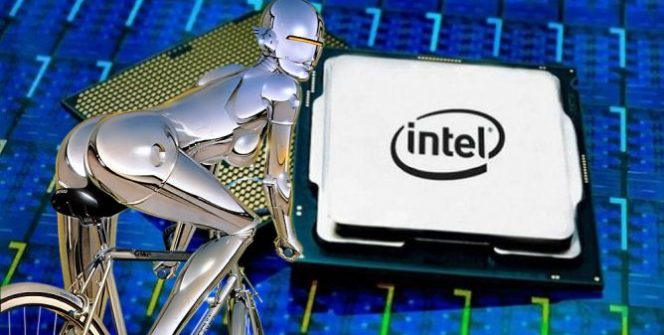TECH NEWS – Intel has launched its rockets.
The Arrow Lake processor family will be the successor to Meteor Lake and will be part of the Core Ultra Series 2. Gaming products are also coming to laptops and desktops, and Intel says these processors will be the first gaming-focused CPUs with artificial intelligence accelerators. These processors will be released by Intel in the fall of 2024, but the company has already hinted at the capabilities of its next-generation Lunar Lake processors. The surprise is that THESE could also hit the stores during 2024! We can expect a new processor core architecture and significant IPC developments. There was also talk of more than triple NPU performance (while AMD said the same about NPU AI acceleration for their next generation, Strix Point APUs…).
The Arrow Lake-S/LGA 1851 is aimed at desktops, while Intel is targeting the Arrow Lake-H/HX/U family for laptops. The high-end products will replace the 13th and 14th generation Raptor Lake processors, and the Meteor Lake Core Ultra Series 1 CPUs currently found in mainstream platforms will also be phased out. Lion Cove P-cores will be joined by Skymont and Crestmont E-cores, and GPUs will be based on a slightly tuned Alchemist+ XE-LPG+ architecture. Lunar Lake CPUs are based on a more advanced core architecture and feature Skymont E-cores. We also get a faster NPU and a brand new integrated graphics chip based on the Battlemage XE2-LPG architecture. The chip Intel is showing is similar to Meteor Lake’s circuit memory layout (two DRAM modules next to the main chip, the latter with chiplet design). Lunar Lake could deliver more performance with less power consumption, targeting thin, light notebooks by the end of the year.
Intel has launched its 14th generation of non-K (i.e. non-tunable) Raptor Lake Refresh processors, so there are eighteen (!!!) new SKUs, the fastest of which has a clock speed of 5.8 GHz and 24 cores. The products include non-K, non-K F and T processors. The F processors do not have a graphics chip (so you need a separate graphics card), and the T is a lower power processor, so it is a bit more limited in performance. A quick summary…
The top Core i9s are the i9-14900KF, i9-14900F, i9-14900T and the 5.8 GHz i9-14900, 8 P-cores, 16 E-cores, similar to the i9-13900. Maximum 36MB L3 cache, DDR5-5600/DDR4-3200 (native) support. The non-K chips have 65W and the T chips 35W power consumption, different clock speeds, and range in price from $524 to $549. There are also four chips for the i7: i7-14700KF, i7-14700, i7-14700F, i7-14700T. Maximum 33 MB L3 cache, 8 P-cores, 12 E-cores, 5.4GHz clock speed at best, similar power consumption (TDP), prices between $359-384. The i5 desktop processors come in two variations. One has 6 P-cores and 8 E-cores (i5-14600, i5-14600T), up to 24MB of L3 cache, and similar power consumption. The other combines the B0 and C0 die with 6+8/6+4 P+E core combinations (i5-14500, i5-14400, i5-14400F, i5-14400T, i5-14500T). The i5-14400 and i5-14400F will be available in 6+4 and 6+8 versions, which makes it a bit confusing. The cache size varies, the price will be between $196-255. Among the i3 processors we’ll see three (i3-14100, i3-14100F, i3-14100T), 4 P-cores, 12 MB L3 cache, max 4.7 GHz, power consumption 60/58/35W. On the H0 die, maximum DDR5-4800/DDR4-3200 (native) support, priced at $109-134. Finally, the entry-level Intel 300 and 300T processors on the LGA 1700 platform and H0 die are dual-core with 6 MB L3 cache, maximum clock speed of 3.9 GHz and 46/35W power consumption. The price is $82.
They are built on the same architecture and process as Raptor Lake (Intel 7 = 10nm++), have higher clock speeds, support faster DDR5 memory, and are supported by current LGA 1700/1800 motherboards. The i9-14900 competes with the AMD Ryzen 9 7900 and the i7-14700 with the i7-13700. Up to +32% performance in content creation, +15% in productivity and +6% in gaming. They also come with a Laminar RM1 processor cooler.
















Leave a Reply